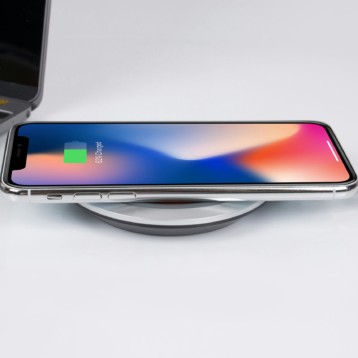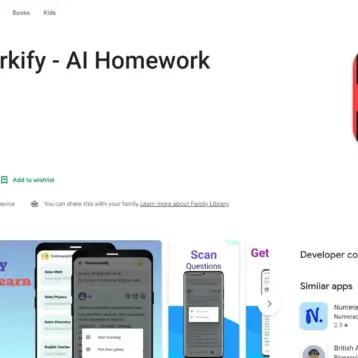
Few apps survive to achieve their designers’ objectives. Not surprising, considering that most applications result from rushed, poor reasoning.
There are hundreds of social media apps for context, but how many do you and your friends use or know?
This lesson highlights five vital considerations to make before you develop an app or hire a developer. Apps without a solid background rarely succeed.
Target Audience
The target audience represents the class of people who you expect to use your app after development. Some apps have excellent purposes but don’t record success due to wrong or vague definitions of their target markets. Therefore, you have to study and understand your audience to ascertain what they’d like to see in an app like yours.
Defining the audience starts with categorizing your app, as that narrows your research significantly. Possible classifications for an app include entertainment, travel, business, networking, food, sports, education, news, shopping, and games.
Selecting the most appropriate app type offers a clear idea of people who would want the app, but that’s not all. You’ll have to consider the potential features of your target audience too. Gender, age, education, income level, profession, primary interests, and family status are essential considerations. Pinpoint which of the various possible subsets would want your app the most.
A 37-year-old female entrepreneur seeking serious relationships would want a different dating app from a 19-year-old first-year college student. Likewise, an app to find nearby vegan restaurants would interest 40-year-old vegan Harry but not his 16-year-old meat-loving son despite their family ties.
Knowing your target audience allows you to understand what they want in the app precisely and how they want you to market it to them.
Proof of Concept (POC)
Concept proofing describes the process of confirming the utility and essentiality of the app in discourse. Missing this consideration may nullify the entire chances of realizing profits from your app. Worse, it may dent your impression in the market — after all, first impressions last longer.
It’s a simple understanding: your concept is brilliant, but is it feasible with available resources? Does it resolve any problem for your target consumer? A POC spares your app the typical first-time blushes that come with new apps.
Proving the need for an app is the first part of concept proofing: define the pain points of your target audience through dependable sources. Don’t assume these needs; instead, study, interview, and mingle with a representative sample from the group. You’ll be able to recognize vital patterns and implications through this step.
The following requirement is to work out solutions for the pain points you identified and crosscheck them with the stakeholders you studied or interviewed. Does your provision satisfy them?
An affirmative nod at this point means that you may proceed to create and test a prototype solution, develop a minimum viable product, and outline a roadmap for the project.
Cybersecurity and Privacy
Security is one of the most discouraging factors that prevent users from embracing a new app. People want absolute assurance over the safety of their data when they use a piece of software. A product that provides excellent solutions to the pain points of its target market but doesn’t assure them of its safety falls far below the mark.
Realize that there’s no one-size-fits-all solution to cybersecurity threats for a start. An alarm clock application is rarely as susceptible to security attempts as a real-time streaming and file-transfer-protocol app. Similarly, it’s imperative to know that the various data segments of your app have different levels of security threats.
Therefore, the appropriate application security tools differ according to the app. An application that collects usernames, passwords, and other sensitive information must have transit encryption, while others using less fragile data may not. However, security doesn’t end here.
Testing the security parameters you choose is essential, if not mandatory. Skipping this step leaves you unsure about your app’s security quality and may make you liable if users suffer a security attack. Use a reputable software firm for this purpose.
Design
Poor designing is one common reason a user uses a helpful app only once before sourcing for a replacement. No one wants to squint their eyes due to illegible texts or clock unendingly because of the poor product organization.
Design deals with the aesthetics and functionality of all elements that make up your app’s interface. Are the icons, images, and typesets appealing to the eyes? Even more, do they serve a purpose in your app or only clutter space?
Many people believe that simplicity does it best and for a good reason. An app with a simple layout possesses excellent clarity, straightforward organization, and intuition. Such a design saves users the pain of excessive scrolling and allows them to achieve their goals without complications.
Trends are equally essential; stakeholders prefer a design that features modern and relatable elements over a product with unrelatable designs.
Add convenient feedback mediums, pursue effortless navigation, and make your icons and text bars self-explanatory. All parts of your composition must communicate their functions.
Payment Channels
Payment channels are unnecessary for every app; however, they’re a vital prior consideration in apps that use them. And, interestingly, various application types require payment gateways these days.
It’d be best to understand the extra security implications that payment gateways create for your application for a start. The ideal security measures for such apps differ from what to use on others. The average app user will only enter their payment details on an app that they trust completely.
You may then proceed to check out other parameters. Your payment gateway has to be fast and straightforward without extreme requirements that put people off. Transactions should start and complete within one to two minutes.
Your focus in this regard has to be smooth and secure payment processes.
Conclusion
Apps are a fast and convenient way to execute tasks, attain objectives, and establish connections. Therefore, they appear to be the ideal response to the increased — almost frantic — demand for convenience characterizing this generation. Please pay attention to the five measures we’ve discussed above to resolve common developer challenges while developing an app that satisfies your audience’s craving and helps you achieve your objectives.










